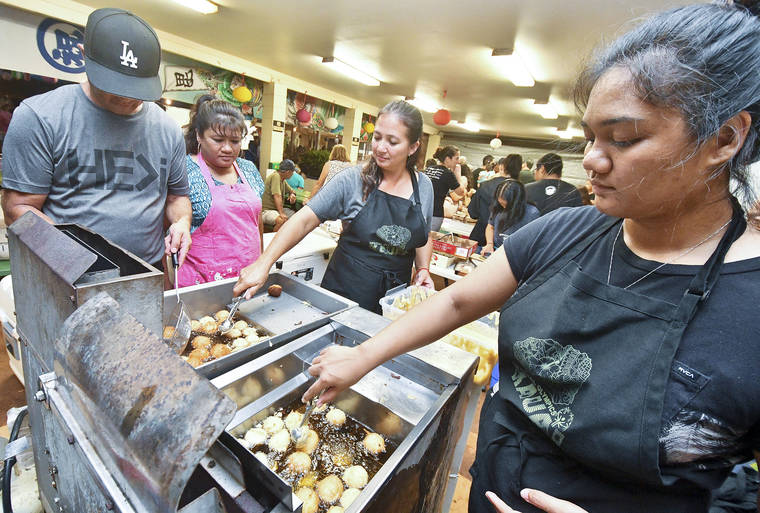HANAPEPE — When the sun sinks below the western horizon Friday evening, the Kauai Soto Zen Temple in Hanapepe will welcome the Kauai Buddhist Council calendar of bon festivals with a traditional memorial service starting at 6 p.m. at the Hanapepe temple.
Soto Zen visiting minister Rev. Shuji Komagata will lead the memorial service remembering those who passed.
Gerald Hirata, president of the Kauai Soto Zen Temple, said dancers needing help getting dressed in kimono can visit the dressers between 6 to 7:15 p.m. on each night. This schedule will apply for bon dances at the other temples for the remainder of the bon season.
Food booths will open from 5 an earlier start from last year’s bon dance, and the Taiko Kauai ensemble will announce the festivities starting at 7 with bon dancing to follow the group’s finale.
The Kauai Soto Zen will offer a special intermission dance at 8:30 p.m., and on Saturday night, the fire burning ceremony will close the weekend festivities at 9.
“This year, our aim is to focus on the ondo, the traditional folk songs and dances,” Hirata said. “The public is anxious to start dancing once again following a year-long break.”
The bon dance is open to the public and there is no admission.
“Bon festivals are celebrated in its own special way,” Hirata said. “It has a country feel and traditions that go back 150 years ago when then first Japanese immigrants arrived in Hawaii.”
Bon dancing is centered around the traditional Japanese folk dancing performed around a yagura, or raised platform, with its distinctive music and live performances of singing accompanied by taiko, or Japanese drum. Dancers within the roped off dance circle dress in traditional kimono, or the less formal happi coats.
Newcomers to the dance are welcomed to join in, using a tenugui, or thin, plain-weaved cotton towel dyed in a pattern and used as an implement for dancing.
“In Buddhist cosmology, the origin of bon took place when Mokuren, one of the Buddha’s disciples, discovered that his mother was caught in the spirit world of suffering,” Hirata said. “Told to follow instructions by offering food to monks at a temple on the 15th day of the seventh month, Mokuren did that and saw his mother’s release. He was so pleased he ‘danced with joy.’
As a result, bon is a joyous occasion of celebration and dance, honoring ancestors and valuing family ties and connections. The spirit of bon is a universal one in which departed loved ones are remembered.”
Because of the connection to food, festival foods are also an integral part of bon celebrations. Many groups utilize food distribution as a fundraising effort for their respective causes. Some of the food offerings at the Kauai Soto Zen Temple event will include the Flying Saucer, pronto pup, andagi, yakitori, shave ice, and more recently, plate lunches.
“The festival brings out the best of an old tradition,” Hirata said. “The summer bon season covers the months of June, July, and August and is an expression of the Japanese-American folk culture and religious traditions that evolved in Hawaii for more than six generations. It carries a universal theme of honoring and remembering our ancestors. It is a time when ancestral spirits return, guided by colorful chochin, or Japanese lanterns, and offerings of food are placed on family altars so the spirits of the departed can feast with the living. The spirits also join in the dance at the festival.”
Bon Dance Schedule
May 31, June 1: Kauai Soto Zen Temple
June 7-8: Koloa Jodo Mission
June 14-15: West Kauai Hongwanji, Hanapepe Temple
June 21-22: Lihue Hongwanji Mission
June 28-29: Waimea Shingon Mission
July 5-6: No bon dance
July 12-13: Kapaa Jodo Mission
July 19-20: Waimea Higashi Hongwanji
July 26-27: Kapaa Hongwanji Mission
Bon dancing starts at 7:30 p.m. for all churches. Religious memorial services are conducted by each temple during the bon season, and information can be obtained by contacting the individual temples.


